The Key for Successful Communication
If you talk to everyone, you talk to nobody.
Personalized communication is the key to digital marketing success.
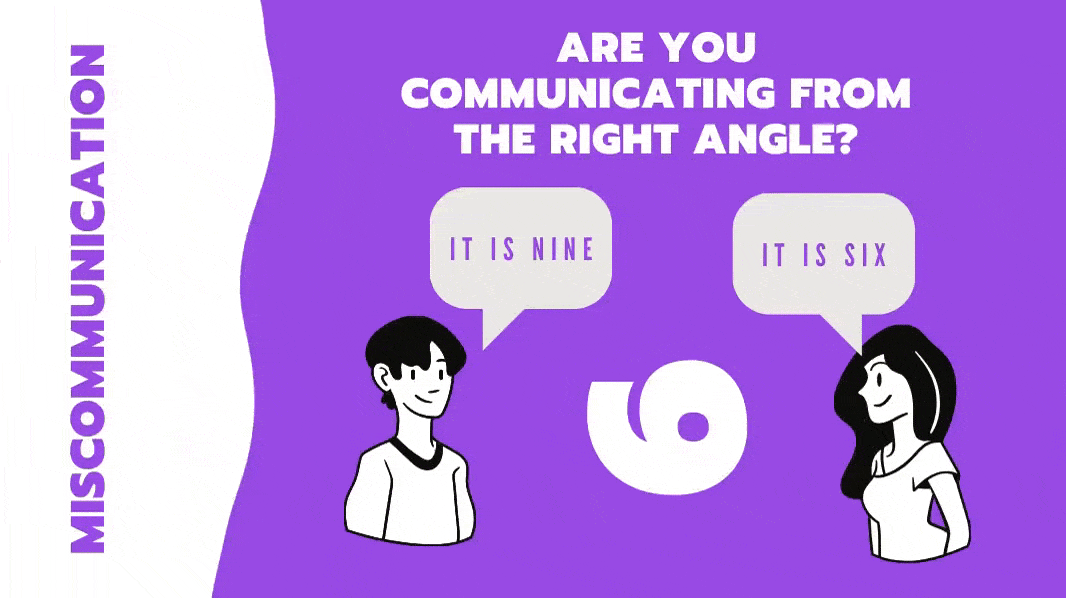
Choosing the right audience for me was the biggest challenge in my marketing career. How to do it right? Are general demographic parameters like age, sex, geographical location, income level and relationship status the only way to describe your audience? I feel they are not.
Digital channels like Facebook offer another level of targeting, including people's interests. But how to know what are they interested in? How to know what to look for in these filters?
#1 Avatar (client, personas, buyers) list
First, make a list of possible avatars and prioritize them. Find your ideal client with whom you want to work (and to whom you would even pay money just to have the opportunity to work with him/her.)
This step looks like a big obstacle for a lot of entrepreneurs. Sometimes it's so hard to overcome that fear in our mind and it’s just easier to say “I will be more realistic and avoid creating an ideal client profile on paper."
Looking into the ideal client is not an easy task, but it's so crucial. It might be that this client does not exist in reality (or at least your experience and reality-checking sensors scream it out loud), but let me explain why this step is the most important in any business. If you can't imagine and describe your ideal client, you will miss them when you have a chance to meet him/her.
How you can know that the person visiting your website and taking action is the right one for your business if you don't know how that person should look, behave, talk, act, etc.
It might be that you and your ideal customer are speaking different languages. I mean, using different terminology but having in mind the same ideas and needs.
Another important part in the prioritization process of your avatars is to know your business values and priorities and to prioritize your ideal avatars based only on that.
Quite often, I hear this sentence: "But Martin, I don't want to focus just on one customer profile – I want to serve everybody who needs me."
The problem here is that if you talk to everybody, you talk to nobody. Your communication becomes too general because you think too broadly. Here is an example:
Let's assume you are selling wall paint.
You have thousands of varieties of colors and types of paints. One client comes to you and asks some questions on how to choose the right paint for her office. If you give that person the general options that people usually buy, you won't talk directly to that person. This is a specific type of client – one word opens different possibilities. She has an office; this is a B2B client; she will need much more paint than the usual retail client; maybe now she’s thinking only about her office, but how big is the whole project?
It’s a small detail, but it changes the perspective of the whole offer you need to give to this client. You can end up selling one ton of paint to just one client if you can detect the language this type of client is using.
That's why it's so important to understand who is the No. 1 ideal client. Who's No. 2?
Plus, over time they can change and one day you can 'fire' your ideal client if you learn some nasty things about him or her. And you would change your mind about that person and create a better picture of your ideal client.
So setting up your first ideal client and making a list of other possible candidates will help you identify the right client at the right time and choose the right language to communicate with him or her.
Another big reason why you need to prioritize your clients and first focus just on one is that if you make it right for one, then you can make it right for another, too. You can focus on one thing at a time.Otherwise, you will be multi-tasking, – meaning the quality of your work will drop dramatically. So you see that focusing on one client profile at a time can help you get better results and learn more about that type of client.
#2 Ideal Customer Profile
B2C or B2B
Is your ideal client a personal or a business subject (B2C or B2B)?
It's important, as in the B2B segment you need to sell not only to the person who will make a decision, but also to others who will impact that decision. Plus you need to have not only the person's profile but also the company's profile.
Profiling means you need to describe that person from the general demographic perspective, but also to go deeper and understand how this person makes a decision. Who and what impacts on one or another of his behaviors? What are the expectations of this person? What do they like? What do they read? Where do they do it? It's important, as it will help in later stages to identify that exact type of person in the digital world.
Find who first, then what
Usually, business owners think vice-versa. First, they create products and services and then try to adapt them to the market or to certain groups. If you think of yourself as an innovator like Elon Musk or Steve Jobs, sure, you can try to create the vision and product first and make people love it. Just don`t forget to have veeeryyyy deeeeep pockets of cash, as for both of these innovators it wasn't a cheap ride.
If your cash pile is not so big, it's smarter to think from the customer perspective first. Who’s your perfect client? What problems does he/she have? How are they solving these problems right now? What alternatives exist today? How can you help them on this journey to get to the dream faster, cheaper, or maybe even with more pleasure? It really depends on the customer profile.
You can sell the same product in a thousand different ways. But the more you know about your customer, the better you can communicate how your solution will change their lives and help them get what they want.
#3 Ideal Client Empathy Map
- WHO are you empathizing with?
- What do they need to DO?
- What do they SEE?
- What do they SAY?
- What do they DO? (It’s different from the second one).
- What do they HEAR?
- What PAINS do they have?
- What do they want to GAIN? What is their DREAM life?
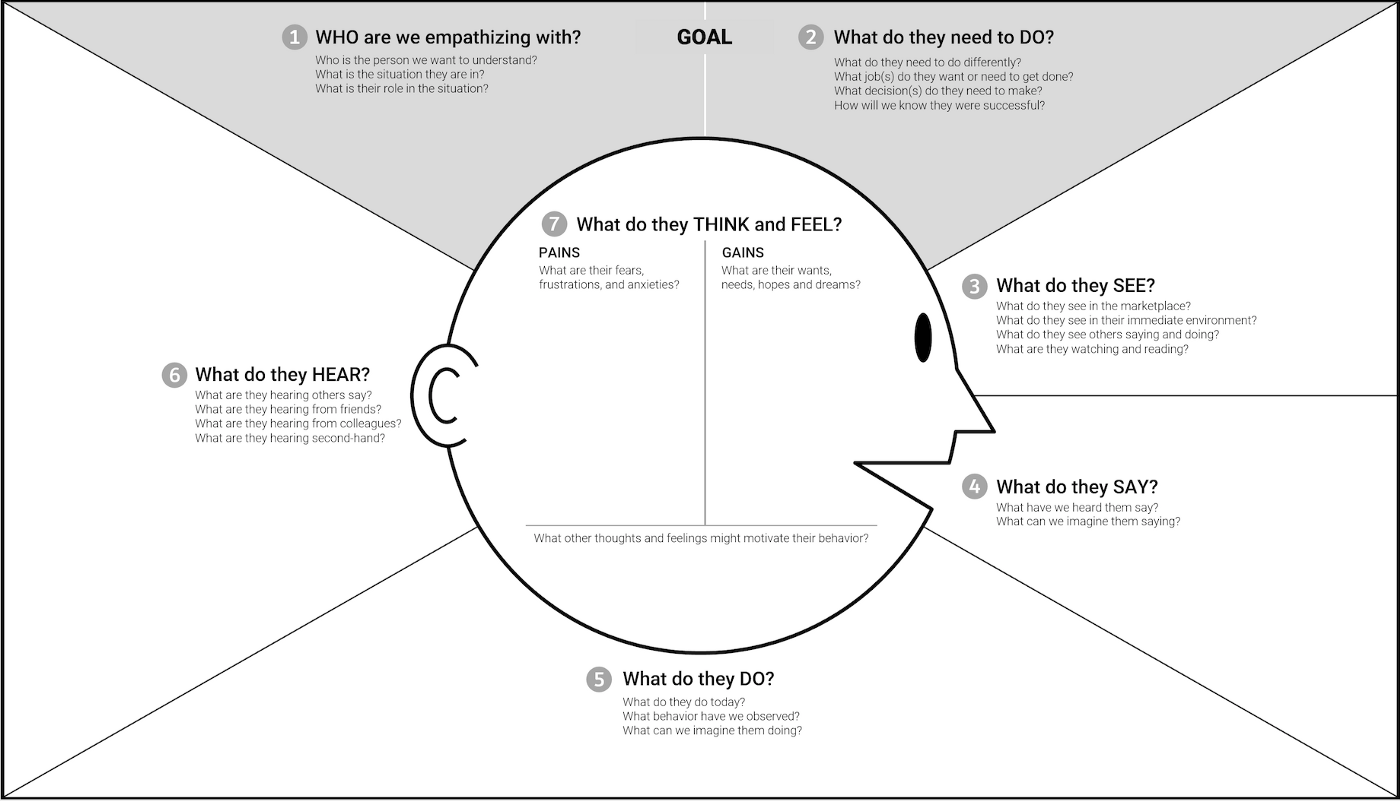
These are the main questions you need to answer to start to empathize with your clients. If you don`t know these things, you will be putting your product and service first. But the problem with that is: nobody cares about you, your product or service. The only thing they care about is what’s in it for them. How you can relieve their PAINS or help achieve their DREAMS (gains).
#4 Targeting options
When you know who your possible customer is, try to set up his/her profiles in the digital world and find out how ad networks reach similar personas .
Try to set up your audience on a Facebook ad platform using parameters from your empathy map. Use a mix of their interests and demographic parameters to find out how many possible and similar customers exist in the world, in your region, and in the markets you plan to target your ads.
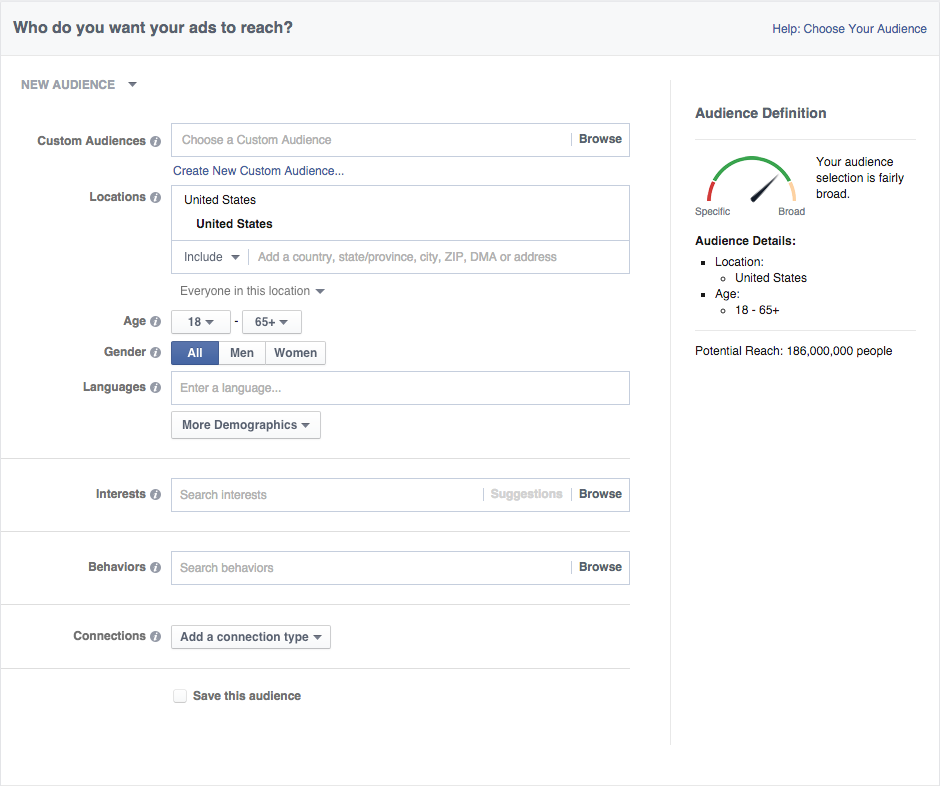
#5 Customer Journey Story
To really learn about your ideal customer, there is a powerful exercise in how you can step into their shoes. Write your hero's (your client’s) journey: where they started and how they reached their ideal place. Who helped them (and how) on their way. Write a short 'movie' script about your hero (avatar/customer) using a Hollywood storytelling sequence. The story does not need to be true or precise; it just needs to come from your head and use all the information you’ve learned about your hero until now.
After this exercise, you will hate your hero or you fall in love with him. Either way, you will feel him and understand better what he needed to go through or will need to go through to reach the point they want to reach.

#6 Customer Journey Map
This exercise will help you to visually represent the journey your hero needs to take to reach their ideal state, but this time you will add additional details, such as where and how and with whom they interact at each step of the journey. How do they feel going through these steps? What platforms, devices or opinions do they use in their decision-making process at each step.
Knowing the full journey will help you lead your hero through it. You will be the mentor who will know the next step they need to make in order to get to the next level. Plus, this will help you to identify your avatar's awareness and readiness for the solution level. Based on that, you can choose the right communication and right offer to reach them at that point.

#7 Customer's DIGITAL Journey Map
The Digital Funnel
Even in 2016, I was writing a 60-page marketing plan. I knew from the beginning that the people who needed to read it would not, even if they had paid for it. What has changed over recent years? I found out how to show the whole digital marketing strategy on one page. What was ironic here is that I had known it a decade before. In 2013, I released my personal workshop Smart Advertising, where I already had this concept in mind. But it all fit together when I met Samuel P. Cook in 2017. He showed me how he creates a map of digital properties in one easy-to-view document and how he links all different parts to different sources in one place.
Below you can see a real example for a digital educational product funnel made on a free online tool Diagrams.net (previously Draw.io). I prefer the paid tool Lucidchart, but basically you can draw your funnel even in a simple Paint program. It does not matter. What matters is that you need to understand it and be able to explain it to others – or even better that your funnel is self-explanatory.
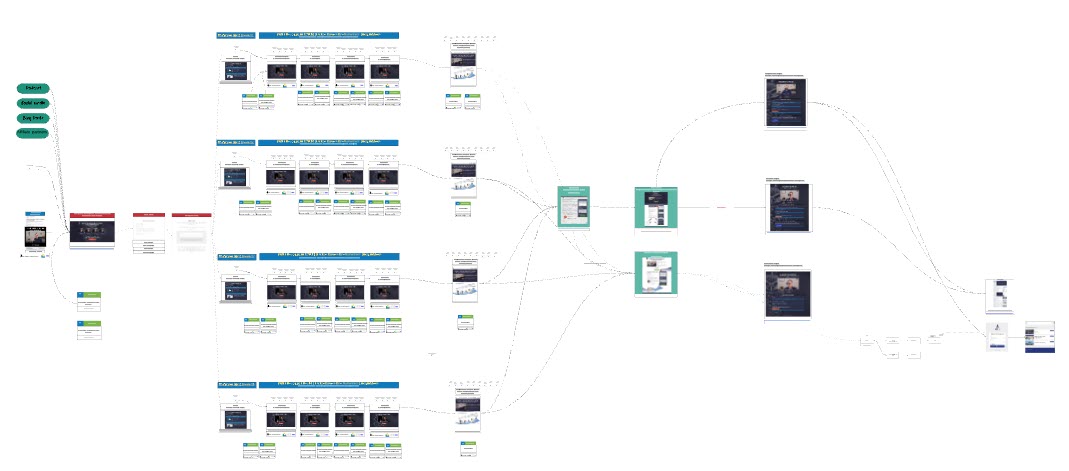
#8 Digital Funnel Simulation
It's very important to know if your funnel works in mathematical theory before building anything. I mean, if you make everything right and people start converting at the conversion rate you expect, will you make money with that funnel? Can it be self-sustaining? Maybe your expectations are too high and in reality, these conversion rates you were expecting will never happen. Even if they happen, maybe in the end your funnel still won’t be profitable. I can't stress enough how important this step is and what surprises me a lot is that almost no marketers (even amateurs) do this before execution. Try to ask your digital agency about digital strategy simulation and take a photo of their faces.
First, you need to know your theoretical goals for each funnel step – the conversion rate of the step. This means how many people will take an action you expect and how many of them will leave the page without taking that action. Then it will be easier to compare it with the real numbers that you get when you start driving traffic to your funnel. You will know exactly what numbers you need to reach to make that funnel work.
Below, you can see the funnel simulation software GERU. This software is made by another online mentor I had, who made the biggest impact on my professional career John Reese.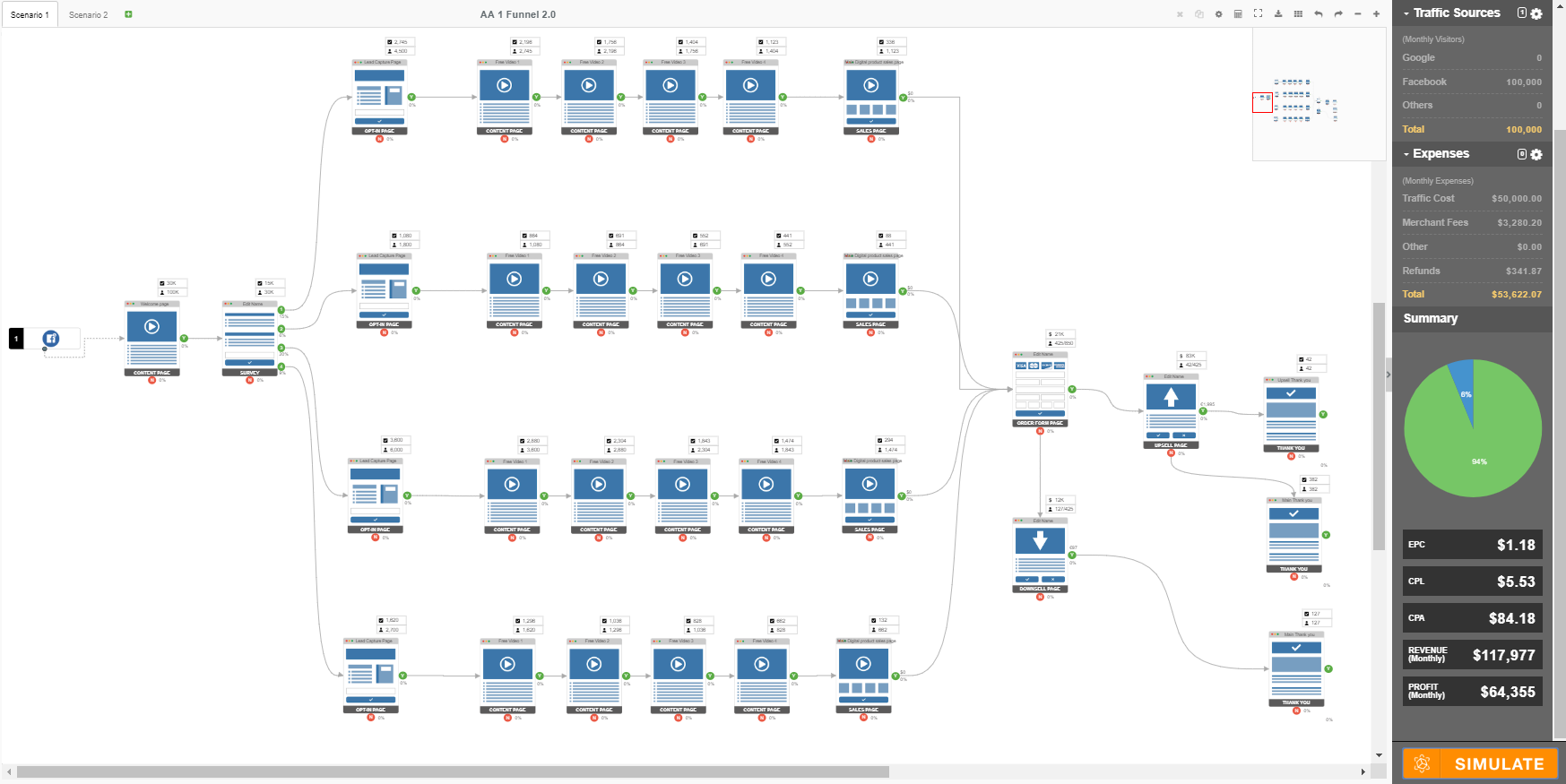

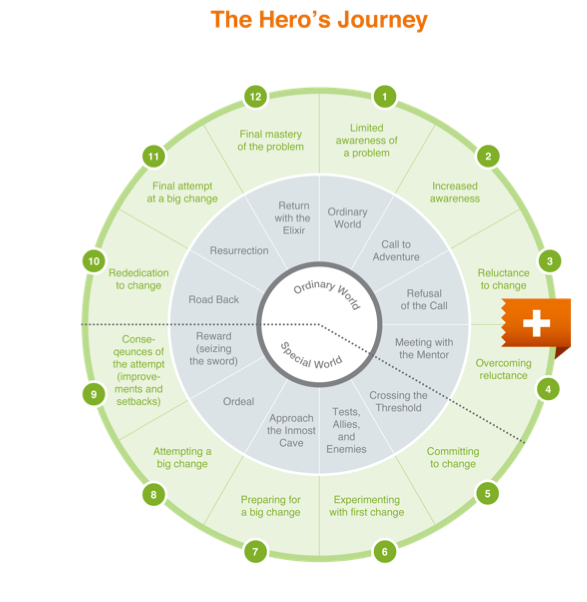
Post date: 2020-07-02